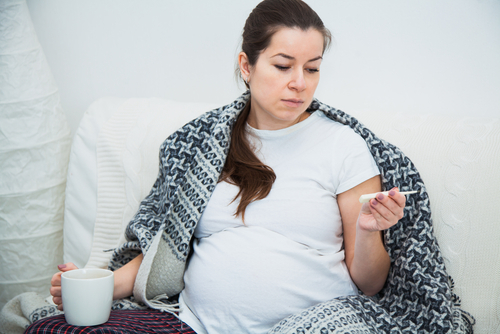Higher viral load raises risk for intrauterine transmission of HBV infection
M3 Global Newsdesk Jul 21, 2018
A mother’s positive status for hepatitis B e antigen (HBeAg) and increased levels of hepatitis B virus (HBV) DNA were independent risk factors for neonatal HBV infection, according to Chinese researchers, but risks were lower for infants delivered by cesarean section.

In this study, published in the Journal of Clinical Gastroenterology, all infants who acquired HBV intrauterine infection were born to HBeAg-positive mothers. And, pregnant women with high HBV viral load (>107 copies/mL) were more likely than mothers with low HBV DNA levels to transmit HBV to their children in utero, researchers found.
More than 350 million people worldwide have chronic HBV infection, and intrauterine transmission occurs in 5% to 10% of infants in regions where chronic HBV infection is highly endemic. Several previous studies showed that positive status for HBeAg and high levels of HBV DNA correlate with increased risk of mother-to-child HBV transmission.
The investigators of the current study, led by Songxu Peng, MD, Tongjhi Medical College, Huazhong University of Science and Technology, Wuhan, China, directed their efforts toward identifying potential risk factors of intrauterine HBV transmission. “The intrauterine transmission of HBV significantly contributes to the persistence of a high number of patients infected with HBV,” they wrote. “However, its risk factors remain unclear.”
To address this challenge, they performed a prospective study of women who gave birth from June 2012 to December 2016 at Wuhan Medical Care Center for Women and Children, Wuhan, China.
All pregnant patients were screened for HBV and antibodies against other infections before going into labor. Of the women who tested positive for hepatitis B surface antigen (HBsAg), 1,200 met enrollment criteria. Intrauterine transmission was defined as occurring in infants who were HBsAg positive both at birth and at age 7 months.
Of the 1,219 infants born to the 1,200 mothers, 0.9% were identified with intrauterine transmission of HBV. Maternal HBeAg positivity was confirmed as an independent risk factor. All mothers in the intrauterine transmission group showed HBeAg positivity compared with women who did not experience intrauterine transmission (100% vs 17.5%, P < 0.001). Younger women were more often HBeAg-positive than older women.
As expected, mothers in the transmission group also had higher levels of HBV DNA compared with women who did not transmit HBV (P < 0.001). Each log10 copies/mL increase in HBV DNA level increased the odds of intrauterine transmission by more than five-fold (P=0.019). Researchers labeled the viral load of HBV DNA “the strongest predictor of HBV intrauterine transmission.”
The results also support previous studies that concluded infants delivered vaginally were more likely to become infected with HBV than those born via cesarean section. This study found that the rate of infection during spontaneous delivery was 11.4% compared with 4.1% for cesarean delivery (P < 0.001).
The incidence of intrauterine HBV transmission—0.9%—was lower in this study than in many others (5 to 40%), the authors noted. Investigators suggested possible reasons for the disparity included “different criteria for the diagnosis of HBV intrauterine transmission, and different sample sizes and study designs.”
The authors concluded that further studies “are warranted to clarify the possible mechanism underlying these associations.”
This research was supported by the National Natural Science Foundation of China.
This story is contributed by Wayne Kuznar and is a part of our Global Content Initiative, where we feature selected stories from our Global network which we believe would be most useful and informative to our doctor members.
-
Exclusive Write-ups & Webinars by KOLs
-
Daily Quiz by specialty
-
Paid Market Research Surveys
-
Case discussions, News & Journals' summaries